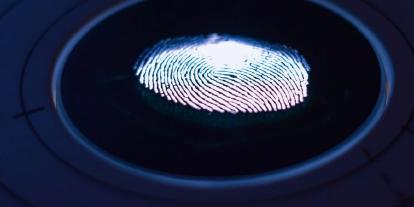How do you keep security when employees work remotely?
Even under the best of circumstances, remote work presents certain security challenges.
One of the challenges – security is everyone’s responsibility, rather than relying on a single person to keep things secure. This is excellent news if every employee has equal access to the tools, resources, and skills to identify potential threats.
But that is rarely the case. Especially when you consider how busy most people are during the day.
So, what could you do to improve and maintain security when employees work remotely?
Common Remote Work Security Challenges
Your employees may be preoccupied with other tasks, and understandably so. After all, they’ve been working remotely for weeks or months now, and they probably don’t want to spend another hour dealing with email or responding to Slack messages. They’d much rather focus on getting their jobs done.
So what happens when someone sends out a malicious link via email or Slack? Or opens up a suspicious attachment from an unknown sender?
Remote workers often lack the context to know whether something is safe or not. And even if they do, there isn’t necessarily anyone around to help them evaluate.
It doesn’t take long for a scammer to gain control over a victim’s computer, steal sensitive information, or install malware.
The good news is that many of these problems can be avoided. By following some basic guidelines, companies can ensure that their remote workforce stays productive while maintaining a high level of security.
Here are some tips to help you protect your team from common remote work security issues.
Multi-Factor Authentication (MFA)
Multi-factor authentication (MFA) is one way to increase the security of your online accounts. This method requires additional verification steps besides just having a username and password.
If someone attempts to gain unauthorized access to your account, they won’t be able to access your account. For that, they have to know your username and password AND something else like your phone number or email address.
The most common form of MFA requires sending a text message to your cell phone. You’ll see it pop up in a variety of ways. For example, if you’re trying to log into your bank account, you might receive a text saying “Please enter the following pin.” Entering a four-digit PIN is one step toward gaining access to your account.
You could also set up MFA by receiving a push notification on your smartphone. In this case, you’d have to verify the request by clicking on a link, included within the notification.
Only Use Company Assets
If you use a personal phone or tablet for work-related activities, you could potentially expose your organization to serious risk. There are many ways that a personal device can become infected with malware or spyware. Without proper protection, your organization could face severe consequences.
A recent survey conducted by Kaspersky Lab revealed that 47% of businesses reported experiencing a data breach during 2017. Of those breached companies, 30% reported that their breach was caused by employees misusing corporate assets such as smartphones and tablets.
This demonstrates how easily a personal device can be used against your organization.
The good news is that there are steps you can take to protect yourself and your organization.
First, ensure that all devices used by employees comply with your company policies. If you find that a device does not meet your requirements, it should be immediately removed from the network.
You should also implement a zero-tolerance policy toward employees using personal devices for work purposes.
Lastly, educate your employees about the dangers of using insecure devices and encourage them to follow your company’s guidelines.
Endpoint Security Must Go Beyond Antivirus
The endpoint security market is booming. As businesses move towards cloud computing and mobile devices, it becomes increasingly important to protect corporate data stored remotely.
To do so, organizations are turning to endpoint security solutions that provide comprehensive coverage across multiple operating systems, applications, and endpoints. These solutions typically consist of several components, including antivirus, web filtering, application control, policy management, and reporting.
However, while antivirus alone is not enough, most vendors offer additional features such as threat intelligence, network monitoring, and identity protection.
In fact, according to Gartner, nearly half (44%) of organizations deploy endpoint security solutions that integrate both antivirus and identity protection.
Proactive Threat Detection
Cyberattacks are evolving. Businesses must remain vigilant to protect themselves from ever-changing threats.
A recent report from Verizon found that organizations are spending $4 billion annually to address cybersecurity issues. This is up from just $1.6 billion spent in 2016.
While it is critical to invest in security solutions, it is equally important to implement them correctly.
Using managed detection and response (MDR) technology helps identify threats or vulnerabilities that could be exploited by cybercriminals. MDR allows you to manage alerts and responses without relying on third parties to provide information.
Imagine these tools to be like motion sensors in your home. They don’t detect something that looks suspicious; instead, they look for patterns of behavior that indicate a threat.
Once detected, the tool sends out an alert and provides recommendations on how to prevent further incidents.
These tools use artificial intelligence (AI), machine learning, and analytics to help detect anomalies and suspicious activity within your network. As soon as you receive an alert, you can take action to stop the attack or exploit it before it happens.
Secure Remote Connectivity
Remote workers often face challenges when it comes to securing their networks. They must use secure VPN connections, firewalls, antivirus software, and even encryption keys to protect themselves from hackers and malicious actors.
However, many companies don’t provide adequate resources to support such efforts. This leads to the creation of insecure networks within the workplace.
To address this issue, there are several solutions that allow remote workers to securely connect to corporate networks without compromising network security. These include remote desktop software, virtual private networking (VPN), cloud computing, and mobile device management.
End-User Training
Cybersecurity incidents are common because people make a few simple mistakes without realizing the consequences.
As such, it’s critical to train your employees to avoid cybercrime. This includes educating them about email scams, social engineering, phishing, malware, and other techniques used to steal data and money.
Use Strong Passwords and a Password Manager
While it is not easy to memorize longer, stronger passwords, taking the extra effort to create a strong and secure password could save you from identity theft.
Password managers allow you to store your logins securely and easily across multiple devices. They are great tools for keeping track of your passwords and protecting your personal information.
A recent study found that 92% of people use the same passwords across different accounts, making it easier for hackers to steal your data. A strong password is essential to ensure that no one else uses your account without permission.
Consider the following guidelines for creating a strong password:
- Make sure your password contains numbers, letters, upper case, lower case, special characters, and punctuation.
- Your password should be at least 12 characters long.
- In every password, include at least one uppercase letter, one lowercase letter, one symbol, and one number.
- Avoid dictionary words, names, birthdays, phone numbers, etc.
- Don’t write down your password anywhere; keep it somewhere safe where only you know the location.
- If you don’t want to type your password every time, try using a password manager app.
You can find many free password managers online, including PassCamp.
Use a Centralized Storage Solution
If your company relies on cloud storage, it is vital to keep everyone up to date about the benefits of using one.
If your employees aren’t already familiar with how cloud storage works, explain what it does and why it’s beneficial to your organization.
In addition, make sure your team knows where to look for data, whether it’s stored inside or outside your network.
Finally, set up a backup plan that includes internal and external solutions.
Use a VPN
It’s critical to ensure that remote workers are well protected. This includes providing a safe environment for them to work in, such as having a proper workspace, adequate internet speed, and even a reliable power supply.
They should also be able to connect to the company network securely via a virtual private network (VPN).
Try out these tips and radically improve your business security even if your employees work remotely. It is that easy.




